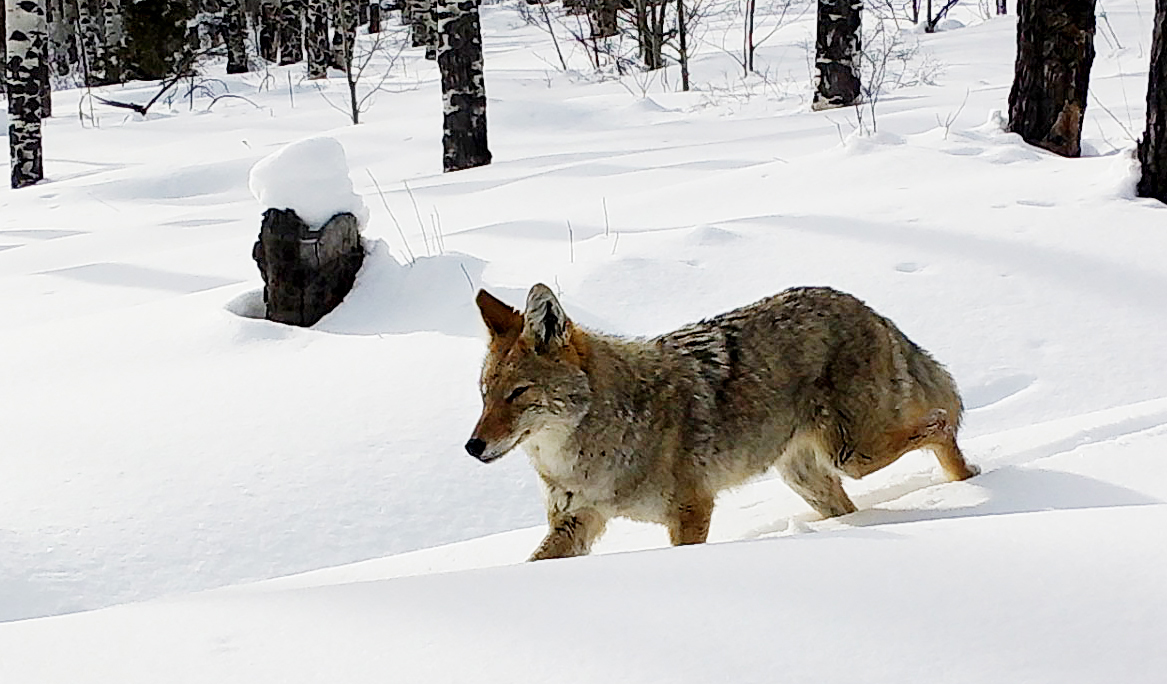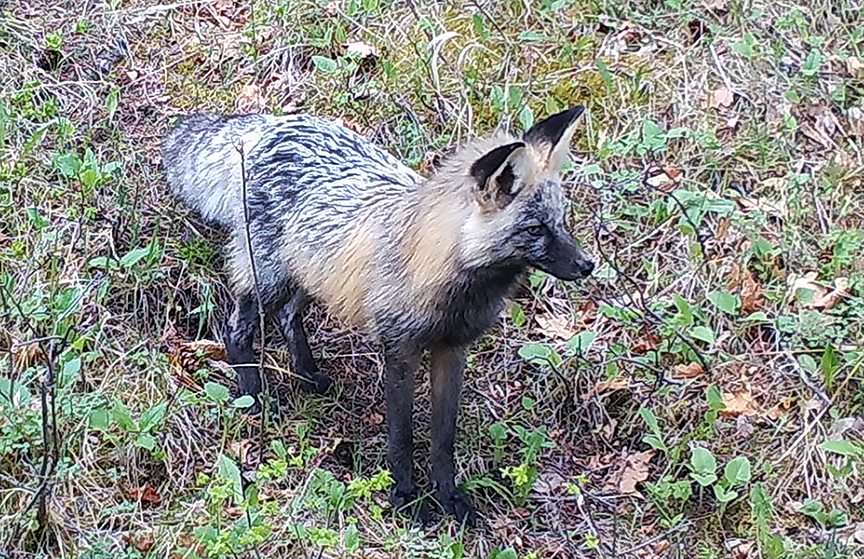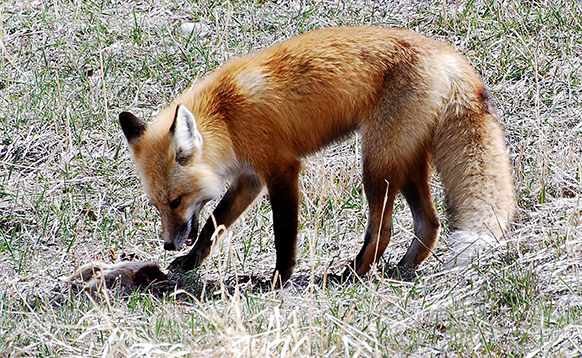The other wild canines in our midst

A coyote on the prowl (OST wildlife camera)
With the reintroduction of gray wolves to Colorado, coyotes and even foxes are attracting a lot of attention – mostly because some observers are mistaking them for wolves.
All three animals are canids, or canines, if you will – members of the biological family called Canidae. So is the family dog.
Kurtis Tesch, local district wildlife manager for Colorado Parks and Wildlife (CPW), has been fielding and responding to calls about wolf sightings since the first 10 animals were released on Colorado’s Western Slope in December.
“We had one (caller) that swore it was a wolf and it was a fox,” he said. “I would encourage people to educate themselves before they call.”
To that end, CPW has produced a guide on how to spot the differences between wolves and coyotes, as the two animals share some visual similarities, though wolves are much larger. So are their paw prints. A typical coyote weighs about 30 pounds and stands 18 inches at the shoulder. A male wolf tips the scale at about 100 pounds and measures 30 inches in height at the shoulder. Wolf tracks are about 5 inches long by 4 inches wide, with four symmetrical toes and identifiable claws; coyote tracks are similar, but are only about half that size, according to CPW.
The addition of wolves to Colorado has implications for the state’s other canids, particularly coyotes.
Research in Idaho and at Yellowstone National Park indicates wolves compete with coyotes and coyotes compete with foxes, but wolves don’t compete with foxes, according to Jonathan Lowsky, wildlife biologist with Colorado Wildlife Science in Basalt.
“At Yellowstone, as wolves took over, the coyote population crashed but the fox population actually picked up,” he said. “It’s going to be interesting to see, statewide, what will happen to the coyote population as wolves expand. Coyotes will be much less bold once wolves are around.”
The coyote population at Yellowstone stabilized over time after the reintroduction of wolves there. Early coyote losses often occurred when coyotes attempted to feed on other animals killed by wolves.
Though they do eat plant-based food, wolves are primarily carnivores that can take down large game. Coyotes are omnivores that eat meat and plants, as well as carrion and even trash. A coyote pack can take down a deer or yearling elk calf, but much of their diet is comprised of smaller animals such as rabbits, voles and mice.
Foxes aren’t on a wolf’s radar as a competitor, but foxes and coyotes do compete for resources. Given the fox’s smaller size, they are wary of coyotes in the way coyotes will become wary of wolves after enjoying a long stint as top dog.
Both coyotes and foxes are common in the Roaring Fork Valley. On Pitkin County open spaces, their territories clearly overlap. Their presence is key to controlling the populations of smaller mammals, according to Tesch. Watching foxes and coyotes hunt for voles by listening for their presence beneath the snow and leaping on their unseen prey is an engaging sight.
Colorado is home to four species of fox, but only the red fox (Vulpes vulpes) resides locally. Typically red with a white-tipped tail and black ear tips and dark feet, red foxes are easily recognizable, but the fur of a red fox can actually range from black to grey to the gorgeous red and grey coat of a cross fox. All have the white tip on the tail. Lowsky has documented cross foxes on open space with wildlife cameras.
Adult foxes weigh 8 to 15 pounds and have a single litter averaging 4 or 5 pups annually. Foxes are not uncommon in areas of human habitation; coyotes seem more likely to live on the fringes but will pass through residential areas, Lowsky said.
Coyotes (Canis latrans) also produce one litter a year, of about six pups. Adults vary in color from pale grayish buff to rich, reddish brown, with a black-tipped tail.
Historically a western species that was absent from the Great Lakes drainage basin, coyotes expanded eastward as European settlers began exterminating wolves. The coyotes themselves could have suffered a similar fate. An extermination effort from 1915 to 1947 resulted in the payout of bounties on more than 1.8 million coyotes in the United States, according to CPW.
Early on, coyotes were even killed in Colorado’s Rocky Mountain National Park (as were wolves). “The historical perception that predators were unnecessary is over. Since then, the coyote is regarded as the park’s most cunning predator,” notes the park’s online profile about coyotes.
What comes next for the coyote remains to be seen.
-By Pitkin County Open Space and Trails
KEY LINKS
OST January blog: Wolves on open space? It’s likely
CPW-Coyote or gray wolf: How to spot the differences

A cross fox (Colorado Wildlife Science)

A red fox at Glassier Open Space (OST)
